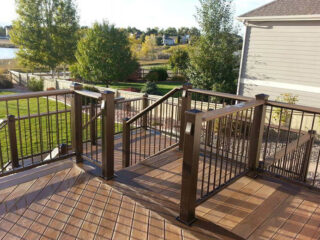
Are you tired of sky-high energy bills? We’ve got good news for you. Insulated roofing might just be the solution you’ve been searching for. This innovative roofing technology can significantly reduce your energy consumption, and we’re here to tell you how.
The Importance of Insulated Roofing
High energy bill troubling you? Insulated roof panels might be the solution! Let’s delve deeper to understand why insulation matters for energy efficiency and the types of roof insulation materials available.
Why Insulation Matters for Energy Efficiency
Insulation plays a pivotal role in promoting energy efficiency. Installed appropriately, it acts as a barricade between the interior of a property and the outside weather conditions. It keeps your home cooler in the summer and warmer in winter, moderating internal temperatures and limiting the need for artificial heating or cooling. This leads to less strain on your home’s HVAC system, resulting in significant energy savings. For instance, consider an insulated roof panel – a high-performance item that could reduce your energy consumption by up to 45%.
Types of Roof Insulation Materials
Various types of roof insulation materials have penetrated the market, each providing unique benefits and fitting into different budget brackets:
- Polyiso (Polyisocyanurate) – Offers high R-value, measuring the insulation’s thermal resistance. It’s ideal for reducing the cooling and heating costs.
- XPS (Extruded Polystyrene) – Boasts high moisture resistance and R-value.
- EPS (Expanded Polystyrene) – Provides the highest R-value per dollar figure, marking it as the most cost-efficient option.
- Mineral Wool – Demonstrates excellent fire resistance besides its insulating properties.
- Fiberglass – Showcases good sound buffering capabilities in addition to insulation.
While selection gets influenced by factors like climate, building design, and budget, optimized use of these materials in products like Insulated roof panels can lead to substantial energy savings.
How Insulated Roofing Saves Money on Energy Bills
Effective insulation in the rooftop plays a pivotal role in minimizing energy consumption, thereby reducing costs. By moderating internal temperatures, less energy is used up in artificial heating or cooling.
Reducing Heat Transfer
Insulated roof panels, for starters, act as thermal barriers, preventing heat from entering or escaping the building. These panels serve to hinder the flow of heat, a process known as reduction of heat transfer. In summer months, they reflect the heat from the sun away from your building, hence keeping the interiors cool. On the other hand, during colder months, they keep heat within your building, maintaining a warm environment indoors. The equation is simple: the lesser the heat transfer, the lesser the need for HVAC systems.
Impact on Heating and Cooling Costs
The energy consumed by heating and cooling systems often forms the bulk of a home’s energy bills. Reducing heat transfer directly corresponds to lesser use of these systems – if your interior environment is naturally moderated, there’s a reduction in the need for artificial heating or cooling. If you need to turn on the heating less often in the winter – and the air conditioning less often in the summer – you’ll find your energy bills substantially reduced.
To put it in numbers, improvement of thermal insulation in buildings can reduce energy bills by circa 15%. Ramp it up a notch with insulated roofing and an energy-efficient household could see savings of up to an impressive 45%.
Adopting insulated roofing serves a dual purpose – it contributes to a significant reduction in energy consumption and, consequently, money spent on energy bills. By opting for these, you’re not only making a smart economical choice but also a sustainable one.
Cost-Benefit Analysis of Insulated Roofing
Addressing the costs and savings of installing insulated roof panels becomes a pivotal point in this discussion. While considering its economic implications, the balance is skewed heavily in favor of long-term savings.
Initial Investment vs. Long-Term Savings
Insulated roof panels, notably, represent a significant initial investment. However, comparing the upfront cost with long-term savings reveals a different picture. Heating and cooling costs decrease dramatically post-installation, offsetting the initial expense over time. Over the lifespan of the roof, savings can extend beyond 45% on the energy bill, a substantial overall reduction.
Case Studies and Real-Life Examples
Analyzing real-life instances helps further illustrate these points. For example, a study conducted on households with insulated roofing saw a drop in energy bills by $350 annually, savings that quickly add up (referencing authoritative sources). Another example saw a residential area upgrading to insulated roof panels; they experienced a 20% decrease in energy consumption in a single year, collectively saving a substantial amount.
These examples highlight and support the significant cost-benefit relationship that insulated roofing offers, solidifying its position as a smart long-term investment. Insulating the roof isn’t just an environmentally responsible choice; it’s a move towards substantial annual savings as well.
Installation and Maintenance of Insulated Roofing
Understanding the modes of installation and regular maintenance aids in reaping the benefits of insulated roofing, that is, reduction of energy bills.
Best Practices for Installation
Installing insulated roof panels without professional guidance may undermine their effectiveness. Thermal performance is usually compromised when the panels don’t fit correctly, leaving gaps that allow heat to escape or enter. Professionals ensure that panels are tightly fitted, optimizing thermal performance and translating it into monetary savings.
- Selection: Always opt for high-quality insulated roof panels that have superior thermal performance. These may initially cost more, but they guarantee decrease in long-term energy costs.
- Installation: It involves careful consideration of the placement and orientation of the panels to achieve maximum heat reflection or retention. Understanding your geographical location, seasonal variations, and environment is key to ideal panel orientation.
- Sealing: After aligning the panels, proper sealing is done to prevent gaps, thus bolstering the insulation properties of the roof.
Maintaining Your Insulated Roof
Proper maintenance of the installed roof ensures its longevity and sustained energy efficiency. Insulated roof panels demand less maintenance, yet certain upkeep tasks are vital to ensure they continue to save on energy costs.
- Regular Inspection: Conduct visual checks to identify any wear and tear on the panels. In case of any damages, these need immediate repair to prevent any compromise in the panel’s insulation capacity.
- Cleaning: Accumulations of dirt and debris on the panels can affect the panels’ heat reflection or retention abilities. Regular cleaning keeps the surfaces of the panels intact and performing optimally.
- Sealant Checks: Insulation is enhanced by a secure seal between the panels. Inspect the seals regularly and ensure they remain intact and effective in preventing heat transfer.
By adhering to these practices of installation and maintenance, the benefits of insulated roofing in reducing energy bills can be fully realized.
So, we’ve seen how insulated roofing can be a game-changer in saving on energy bills. It’s clear that the thermal performance of these roofs can significantly reduce the need for artificial heating and cooling. We’ve also learned that while the initial investment may be substantial, the potential savings in the long run make it a smart choice. We’ve underlined the importance of quality installation and regular maintenance to optimize these benefits.
Remember, choosing high-quality panels and ensuring proper installation are key. Regular inspections and maintenance can extend the life of your insulated roof and maximize its energy-saving potential. It’s a sustainable and economical solution that truly pays off in the long run. In the end, insulated roofing isn’t just about saving money, it’s about making a smart, long-term investment in your home. Invest today, save tomorrow. It’s as simple as that.








